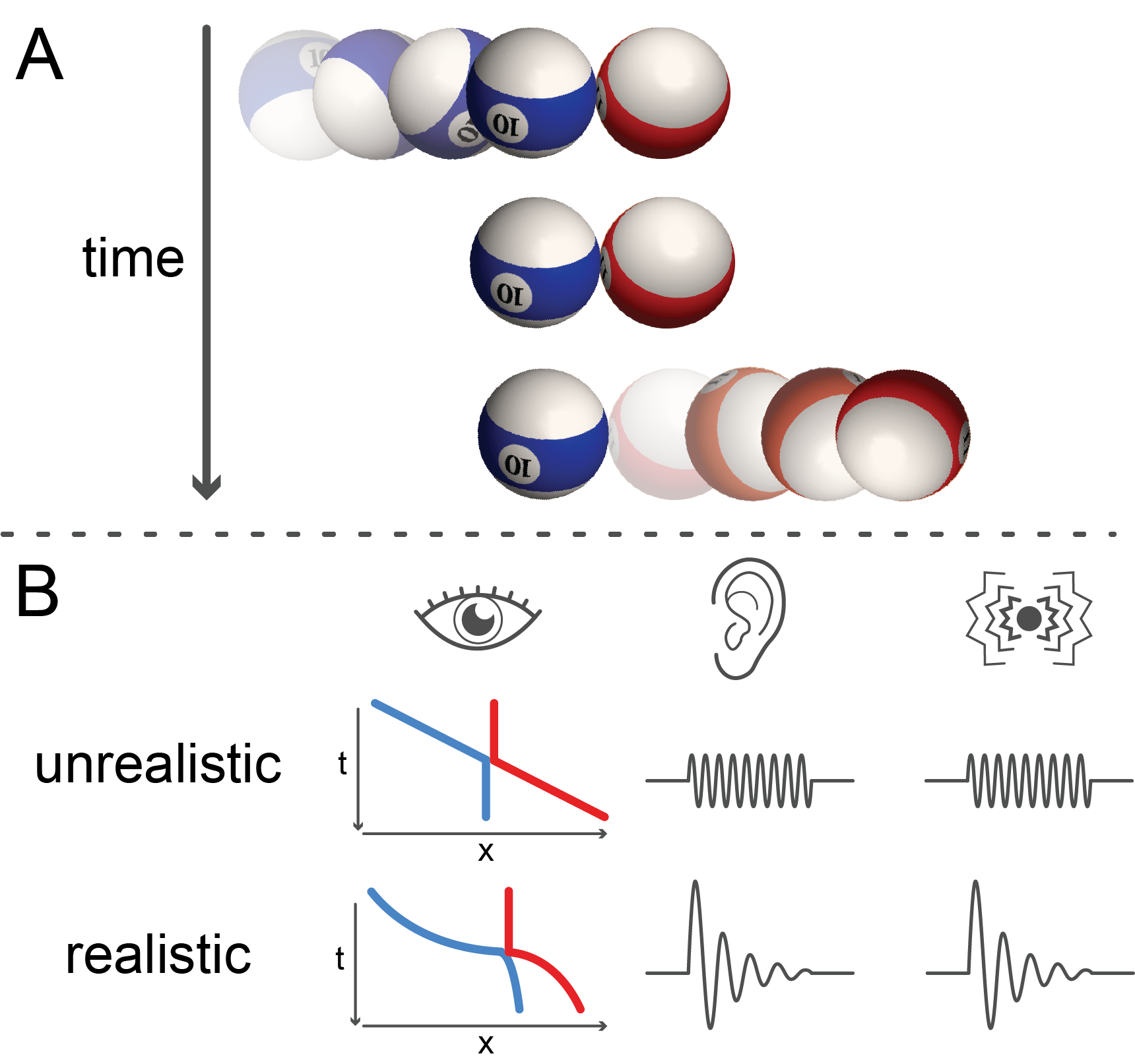Abstract
Interacting in real environments, such as manipulating objects, involves multisensory information. However, little is known about how multisensory cue characteristics help us determine what has occurred in a scene, including whether two events were causally linked. In virtual environments, the number of sensory modalities present and levels of realism often vary. In this work, we explore what role multisensory information and physical realism play in people’s causal perception. So far, haptic cues have rarely been studied in causal perception. Here, we combined visual, auditory, and haptic cues in a psychophysical study in which participants were asked to judge whether one billiard ball caused another to move. We manipulated the temporal delay between cause and effect events, and the physical realism of each cue. While temporal delays generally decreased causal judgments, the number of multisensory cues and their physical realism increased causal judgments. We highlight the implications of this work for building immersive environments.
Overview of the Study

(A) An overview of the study in which the blue ball starts rolling towards the red ball, makes contact with the red ball, stops, and then the red ball rolls away (B) Conditions for realism of sensory cues